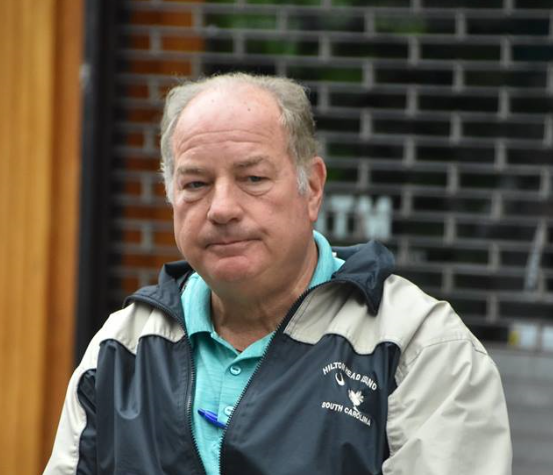The 2020 Presidential Election: Final Analysis and Projections

Disclosure: I am a registered Democrat, and served elective office as a State Assemblyman and Hudson County Freeholder. I ran for Mayor of Jersey City, unsuccessfully, far too many times—five.
These experiences have given me a unique glimpse inside the science of polling. Over the years, in my capacity as a blogger, I have successfully forecast the past several Presidential and midterm National election results. Some of the very pollsters working for Presidential candidates—past and present—have cut their teeth in many New Jersey elections. Joel Benenson [Hillary Clinton] and John McLaughlin [Trump] are two prominent pollsters that I’ve known and used.
My fascination with polling and interest in political science is a hobby. I love going online to polling sites that now make available the polling crosstabs—information that wasn’t typically offered, years ago, to the average Joe. The Real Clear Politics [RCP] website has practically every poll taken and the detailed crosstabs posted on the webpage. An invaluable source. I also make use of the demographic information compiled by each State in our Union, which is likewise posted online. This is a treasure-trove of statistics useful for crosschecking the polling outfit’s data, to see if the poll is properly weighted—reflecting accurate demographics of the voter composition for the States being polled.
At this point, disregard any polling results for horserace numbers [the who is ahead of who in the election at any given point of time] from any polling outfit associated with media sources. These crosstabs seem to have a pattern—too many Democrat [DEM] participants and too few Republican [GOP] and Independent [IND] participants. They do not conform with the actual voting census of the States being polled. On average, there is as much as a 13-percentage point inaccuracy in the composition of polling respondents based upon party affiliation—typically favoring DEM respondents.
Other noticeable glitches in these polls indicate that they are not surveying suburban voters to accurate demographics [age, gender, race, education, income], and they are soliciting far too many ‘registered’ voters to comprise the surveys as opposed to ‘likely’ voters.
There is a reason for skewing polling demographics—it produces a polling result with a desired outcome. This is typically useful early in an election race, in order to give the appearance that a candidate is doing well and has a shot. It is useful for a candidate’s fundraising and soliciting volunteers. Many insiders refer to these polls as ‘showcase polls.’ These polls are not what the campaign apparatus for a candidate would rely on for strategy.
Campaign stratagem for a Presidential race relies on what is referred to as internal polling ‘and the inside numbers.’ This is sacredly guarded information that both campaigns rely on—key districts from Counties in every State that have consistently voted in proportion to the correct National election results, in at least the past four Presidential elections. These polls are deadly accurate and are what the campaigns rely on to evaluate where they stand at a given point of time during the campaign.
Each polling company has its own methodology for what districts get selected to determine the inside numbers. Trump’s pollster, John McLaughlin, is the best in the business at this strategy. Trump’s campaign targets voter registration in State’s where Trump needs to win. The Trump campaign used this strategy in 2016 and it helped deliver victories in Pennsylvania and Wisconsin. These newly registered voters are in nobody’s poll, and they typically vote for whoever registered them.
Pay little attention to overall national horserace polling numbers, the results are worthless because they only calculate popular vote, which States like California and New York can skew. We elect Presidents by the electoral college methodology, so only pay attention to battleground and swing State polling numbers.
The value that national polls do have is for giving insight into how each demographic being polled feels about the state of the country and the issues in the election. These results, and the conduct of the two Presidential campaigns [what they are speaking about and where they are campaigning], will give you an accurate picture of where the race stands and what the candidate’s internal polling numbers are showing.
Here is food for thought—an analysis of the polling to date: Of note, polls indicate that Trump has a shot at breaking into low double digits for Black support [mostly comprised of males under 60]. A GOP record for a Presidential candidate. Trump is also outperforming what he garnered in 2016 Hispanic support. Trump also does far better with likely voters than with registered voters.
Trump is having a problem right now with most suburban woman and with seniors—they don’t like his demeanor. Because demeanor is a likability issue rather than a policy issue, Trump has a slight chance of persuading some of these voters with a change of attitude. That is why he substantially altered his final debate strategy by not being as caustic. Again, because most polls oversampled DEMS more than respondents with other party affiliations, these factors must be weighed in.
Trump’s two key negatives have been his handling of COVID-19 and his demeanor. His problem, right now, is that the race is totally about him. His campaign needs to closeout by emphasizing economic issues [polls indicate he does best on economic issues, which edge out COVID-19 as the top issue] and turning the race into a referendum on Biden’s platform and his now exposed ethical lapses. Time is running out.
Biden’s campaign has totally made the race a referendum on Trump and his handling of COVID-19. That is why they have mainly attacked Trump’s demeanor—the most unfavorable thing that polling respondents cite about the President. It also explains why Biden ran a laidback campaign. When it’s a referendum election on an incumbent with favorability numbers under 50%, you let the candidate have the limelight. Besides, Biden couldn’t really campaign on other issues, because on matters such as healthcare, environment, and economics there is a divide between the far left and moderate wings of the DEM Party. That is why Biden seldom gets into specifics—he does not want to alienate voters in different spectrums of his party, along with Independent voters he needs to win over.
The events that will determine the final outcome of this election have yet to occur. A small undecided electorate—well under ten percent—can still swing a tight election. Favoring Biden is the fact that there are fewer undecided voters at this point in the election cycle than there were in 2016. With a third of the votes already cast, votes are at a premium with each passing day. If Biden has a lead, then he wants to run out the clock without making waves.
The next several days will tell all. The factors being considered: candidate’s performance in the final Presidential debate, the unraveling Biden & Son scandal, and Biden’s substantial campaign financing advantage over Trumps. There are also intangible factors at play in every election. These influences will be found out after election day—when the pollsters and pundits do an autopsy on the 2020 election results.
One such intangible is an anomaly that pollsters are still trying to determine—the hidden Trump vote. These hidden voters either lie to pollsters or won’t respond at all to pollsters. It is what many pollsters attribute to why the polls were so far off between Clinton and Trump in 2016. Very few polls got that election right. But this year, their number maybe fewer, represented by the single digit undecided pool of voters at this point in time.
To flush out this vote, pollsters employed other tactical questions in their polls, such as: “Who do you think will win the election? Who are most of your friends and neighbors voting for? Are you better off today than you were 4 years ago?” Ironically, a majority of respondents, even those affirming a vote for Biden, answered Trump for who they thought would win and who their friends and neighbors were supporting. The majority of respondents also acknowledged that they are better off today than they were four years ago.
The answer to these questions all registered above the fifty-percentile threshold in polls. The data is anecdotal at this point, and can only become science after election results analysis, but it might shed light on the formula for understanding the hidden Trump vote disguised in polling.
Another intangible: There is anecdotal information, apparent in the public square, that could also serve as a clue for determining the hidden Trump vote. The overwhelming unfavourability of the news media with the electorate—an astonishing, on average, 83% negative rating. Biden, by and large, has noticeably become the media’s candidate in this election. The media’s coverage of the campaign has been embarrassingly and conspicuously biased. Even respondents acknowledging support for Biden recognize this. The country is united—they hate the stature of the National news media. Trump has made the media out to be his enemy—this helps him with voters.
Americans always want to see a fair fight and detest piling on.
A final intangible: Other anecdotal information gleamed from polls that probed the topic: a significant number of respondents, including moderate DEMS, are bothered by the DEM party’s flirtation with socialism. Not many polls explored this key factor directly, but the answers to other issue questions by respondents [such as the DEM Party response to recent civil unrest], underscore it. One of the great, silent motivational voting issues in this campaign.
So, what do the polls and the conduct of the campaigns tell us? In a nutshell: Trump cannot win the election without carrying the State of Florida. Practically, every scenario to 270 electoral votes for Trump, require that he carry Florida.
Beyond that, there are two other key States that Trump also needs to carry: Pennsylvania and Ohio. If Trump secures wins in these States, he opens up a litany of scenarios and options for the rustbelt and battleground States. If Trump additionally puts North Carolina, Arizona, and Wisconsin in his column, he should secure reelection. If he captures Michigan and Minnesota, in addition to all the other battleground States, Trump is flirting with an electoral college landslide and capturing the popular vote.
If Biden cannot stop Trump in Florida, he must stop Trump in three key States: Pennsylvania, Michigan, and Wisconsin. If Biden prevails in this trifecta, Trump cannot win, despite carrying Florida.
So, what do I think happens? My two cents worth:
Going into the final days of any election, Trump has what every candidate for office wants: momentum! Biden has what every candidate for office never has enough of: money! My analysis forecasts Trump the winner, by a surprisingly larger than ever expected margin. If Trump runs the table of States noted in the earlier analysis, the GOP will hold the Senate, possibly adding new members. They will also close the gap in the House, significantly.
Biden is hemorrhaging Blacks, Hispanics, and some moderate DEMS. Another anecdotal: Trump has been polling the attendees of his rallies—ten to twenty thousand attendees per event. They are finding a significant number of DEMS in his audiences. That should be disturbing news to Biden. This leaves him counting on younger, idealistic liberal voters to replace those who have left the party. But this demographic is the least likely to show up and vote. They are also far too few in numbers to counter what Biden needs to make up. This is another demographic highly oversampled in media polls.
Latest polling indicates the economy is finally winning out as the most important issue motivating voters, edging out COVID-19. On the economy issue, Trump tops Biden in polling. The ‘better off than four years ago’ scenario pays big dividends for Trump. Biden rues the day that he attacked the oil industry and fracking—bye, bye, rustbelt.
The media bias and Americans’ disapproval for the conduct of the press will help tilt the dwindling undecided voter Trump’s way. The DEM Party platform embrace of some socialist agendas, results in swaying enough voters, who typically vote DEM, from turning out to vote, or Biden’s worst nightmare, they vote for Trump.
Again, I caution, the events determining this election are still happening and will continue to, right up until the last ballots are cast. What other kind of finish would you expect for one of the most bizarre years in our lifetime—2020.
Postscript: Incidentally, the NJ’s vote by mail took the greatest advantage the DEMS have in this State off the table—GOTV. If you are a State strongly leaning Biden, you want to have just DEMS turnout and vote. If there is ever an issue that arises against the DEMS and ticks off Independents or never-Trump Republicans, who didn’t intend go to the polls to vote, lookout. [The breaking Biden & Son scandal could be such a topic.] The mail-in ballot, distributed to voters that DEMS might not want to turnout, is ammo sitting in their opposition’s lap. In traditional elections, a political party typically strategizes the flow of the votes in a State that they have an election advantage in. Mail-in ballots takes that strategy off the table.
In the past primary, 10% of the ballots were disallowed. If that carries forward, the majority of votes tossed out this November will be Democrat ballots. Remember, only questionable signatures give a voter the ability to revote. Other technical problems, like failing to insert votes in envelopes and leaving envelopes unsealed, cause the ballot to be discarded; without that voter ever knowing their vote did not count. A problem with the mail-in voting process that needs serious fixing.
Louis Manzo is a Former New Jersey State Assemblyman who sat on the Assembly Health, Economic Development, and Environmental committees.
Former Hudson County Freeholder.
Former Chief of Jersey City’s Health Division & Director of the Hudson County Division of Environmental and Public Health.
Traditionally published American author. Published works include the bio, Ruthless Ambition: The Rise and Fall of Chris Christie ; and the novel, An Irish Lullaby. On occasion, a content contributor to various news and sports blogs. Regular guest on Connecticut morning radio talk show, The Phil Mikan Show [WLIS 1420 AM & WMRD 1150 AM].









Appreciate your insight. Your points are well taken.
One important variable you didn’t drill into much is the independent (NPA) factor. In FL, where I live, 27% are NPA. There is less transparency into this segment.
NPA’s tend to vote with lower turnout, have been more likely to vote a third party candidate (Johnson, Nader, Stein), and/or vote in response to a current administration.
In 2018, Sarasota (which has 12k more red than blue voters), elected a blue congresswoman because of the NPA vote. FL will be decided by NPA’s.
Another thing you didn’t factor in is the decided effect Stein & Johnson played in Trump’s 2016 victory. We’re now seeing less than 1% voting third party candidates.
The Hunter Biden scandal went nowhere and today was shot down by none other than Putin himself. You are overstating Trump’s momentum and are setting aside the consistency of polls for six months. You are obviously smitten with GOP like Trump’s beloved Rassmussen and are going off the deep end predicting GOP control of the Senate and sharp narrowing of the House. COVID is a far more vital issue than you seem to acknowledge. Rallies don’t vote and the early voting has been engineering in record-breaking bravado. With all due respect your analysis appears to tell us who you WANT to win rather than who will win. Best wishes.
Trump will win in a landslide, you’ll eat crow. Maybe CNN will hire your expert Nostradamus-esque prediction analysis. Bet you thought Hillary was going to win in 2016.
Hee hee hee!
Here’s a towel to wipe all that egg off your face, rube!
Trump has already won. He found election fraud and Biden will be losing 4 states. It pays to know people in the know.
Not sure I buy into your emphasis on “hidden” Trump voters, I read an interesting piece on how pollsters have dealt with the aftermath of 2016 polling in attempting to correct errors that might give incorrect data. And the pearl-clutching about “socialism” seems to be in the vein of conservative media fear-mongering that we see in GOP campaigns; I don’t think it does much of anything other than solidify the President’s base and alienate suburban voters, like many in NJ that rejected the GOP in 2018. But all in all an interesting piece, I would have liked to hear your projections for our congressional races but I’ll take what I can get. Thanks!
Every time someone talks about the “Shy Trump Voters”, if laugh and say “You mean the pickups with the hugh Trump flags, those shy voters?
Wrong.
What the media won’t report about Trump support nationally. https://www.larouchepac.com/20201027/trump-rallies-media-doesnt-want-you-see
I was a candidate for Indiana Governor in 2008 and 2016 and a candidate for President in 2020 as i obviously voted for myself each time, however a vote of mine in 2016 still wasnt counted, butt i definitely filed all of my paperwork correctly and may have been only candidate who had done so! 🙂